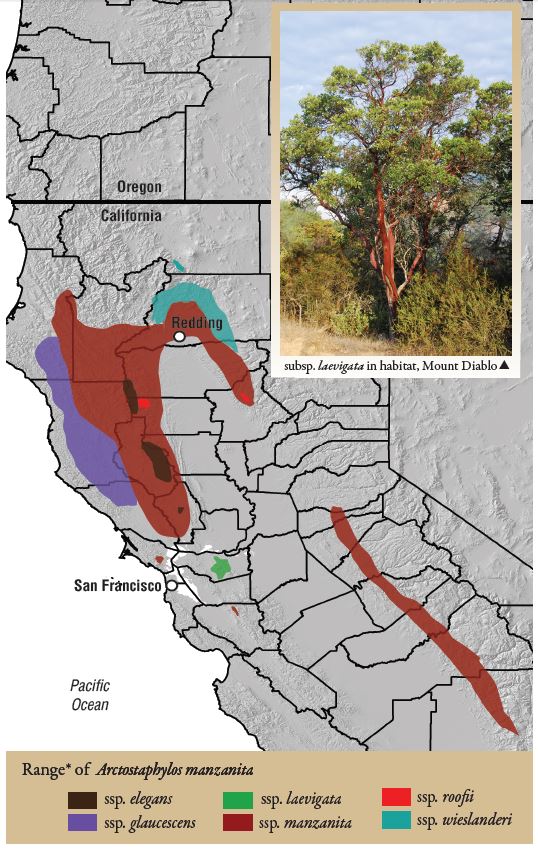Last weekend, I hiked in Trinity County along a low-elevation, fire-prone section of the Bigfoot Trail between Highway 3 and Hayfork and was able to witness obligate & facultative seeding in action.
From Field Guide to Manzanitas, Backcountry Press, 2012
One-third of manzanita species are facultative seeders. These are species that regenerate post-fire by both seed and burl resprouting. The remainder are obligate seeders that lose their entire adult population in a fire and depend on a seed bank for regeneration. Obligate seeding is the current model in manzanita evolution.
To understand why, consider the climatic dynamics over thousands, or tens of thousands of years or more. In the case of the resprouting species, particular individuals can live for centuries, resprouting over and over, cloning new individuals as the burls expand with each fire cycle. But in that population, the rate of genetic change is limited, because most individuals live a long time by way of asexual reproduction. This suggests that populations may be unable to respond to rapid climatic changes that might occur in only hundreds of years. The obligate seeders, on the other hand, lose all adults in stand-replacing fires and new post-fire generations have to establish from more genetically diverse seeds. Those populations consequently have greater flexibility to shift and adjust as circumstances require; traits that might have been rare and less important in older generations can emerge through natural selection and become critical in the newer generations within the lifetime of resprouting manzanitas.
Much of this area burned in the summer of 2015. While evidence of the fires were everywhere, there are many signs of the next generation of plants returning to the landscape. This was particularly true on some of the south-facing slopes above Philpot Campground where two species of manzanitas were exploring different reproductive regimes– both obligate & facultative seeding.
Nature Notes:
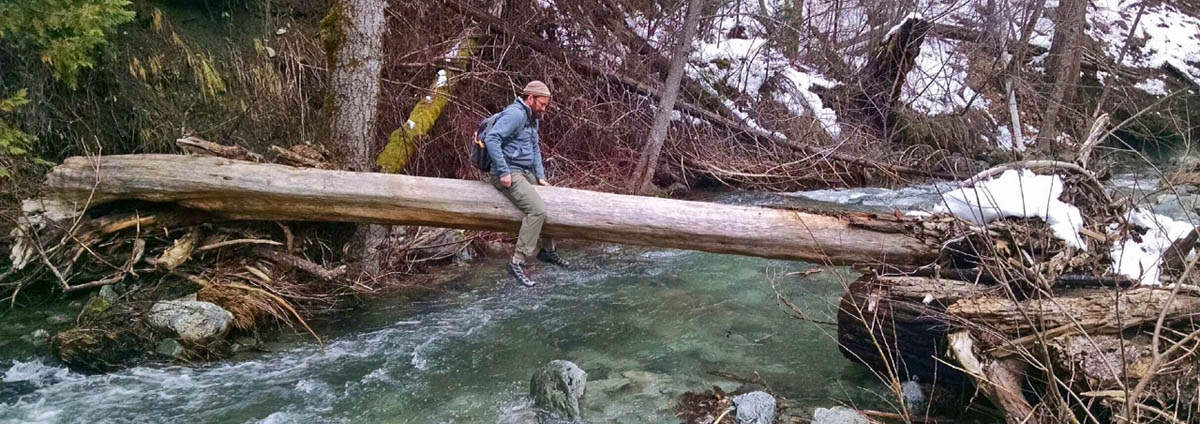
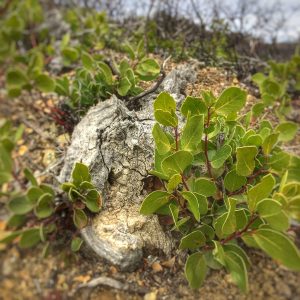
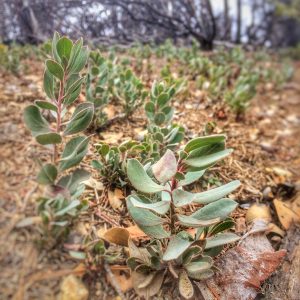
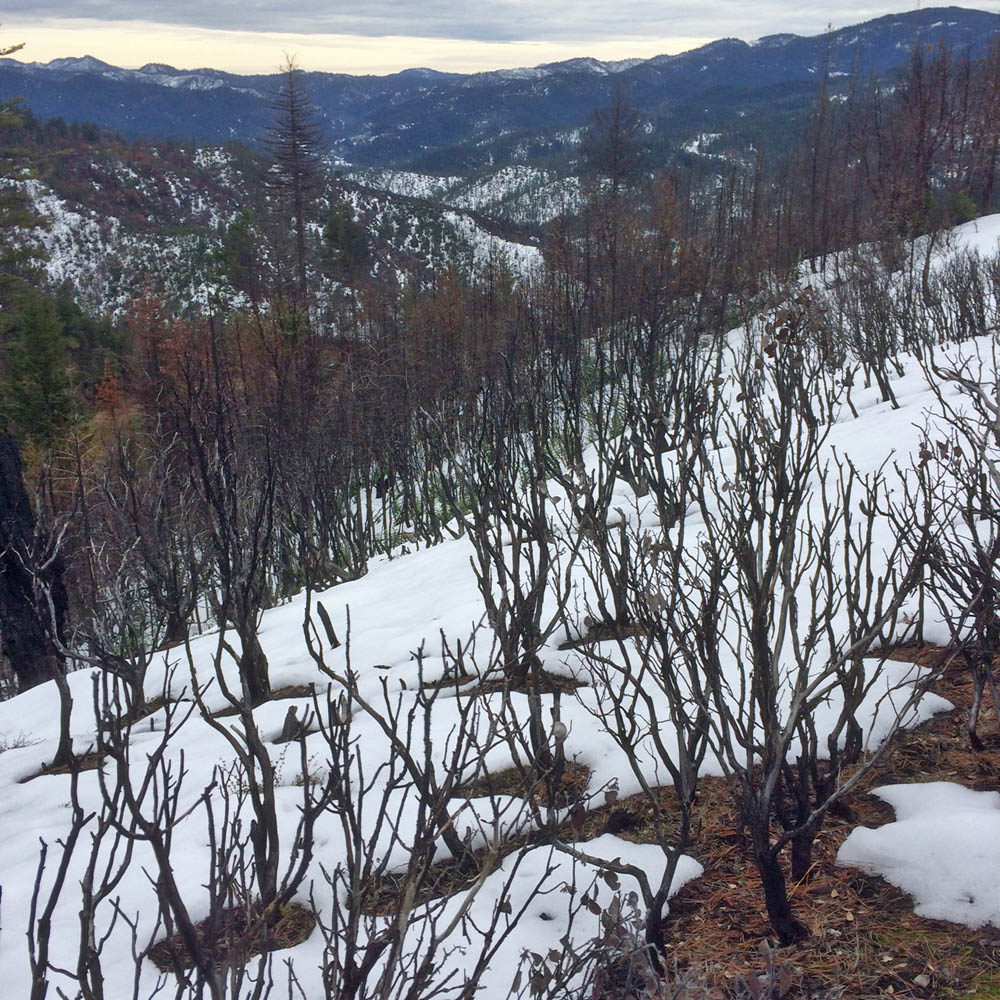
Do you know which subsp. Of A. manzanita that is? I am starting to pay more attention to that species; especially want to sort out subsp. manzanita, which grows right outside my office, and subsp. wieslanderi, which is documented within a mile or two of my office.
Hi Julie- It has to be A. manzanita subsp. roofii as that is the only burl forming common manzanita subspecies. Looks like it may be a range extension into Trinity County based on our map.